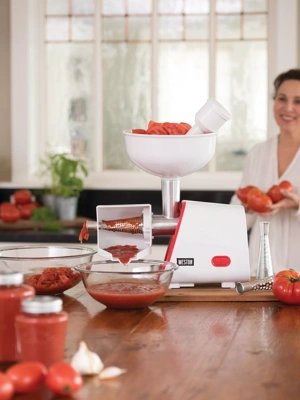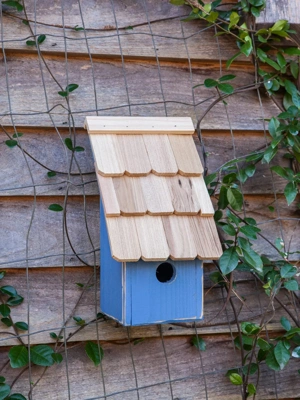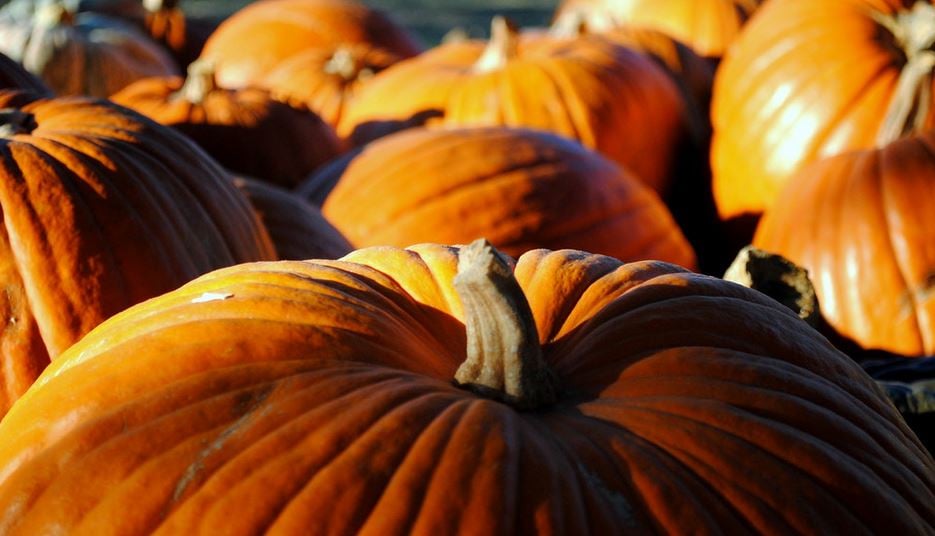How to Grow Pumpkins
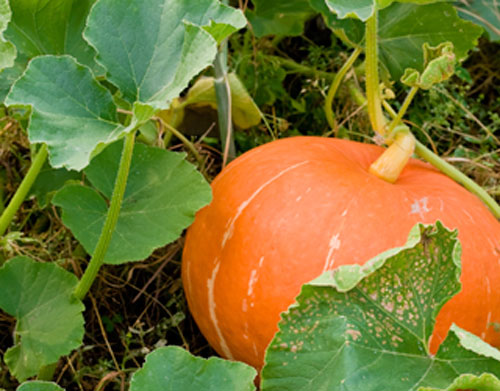
Although some pumpkins grow on long vines that extend more than 20 feet, there are compact varieties that fit nicely in smaller gardens.
LET this be the year that you carve a jack-o-lantern that you grew in your own backyard. Pumpkins are not difficult to grow — even in raised beds or containers. Start with a classic orange one or try something different. Today, you can find pumpkins that are yellow, white, blue-gray, green-striped — even oddballs like Black Futsu, a 3 to 5-pounder with knobby skin. Whatever variety you choose to grow, all pumpkins like the same thing: full sun and rich, well-drained soil full of compost.
Where to Plant Pumpkins
Pumpkins grow on long vines, with some extending 20 feet or more. If you're planting in a raised bed or garden, choose a spot where vines have room to ramble. In a raised bed, plant pumpkins near the edge of the bed so you can train the vine over the edge, leaving the rest of the bed for other plants. When the plants are young, it's easy to direct the vines where you want them, but you'll want to leave them be once the vine starts flowering and setting fruit.
If you don't have a lot of space, consider a smaller variety. The bright orange fruits are inedible, but they sure are cute. Another option: look for "pie pumpkins" or "sugar pumpkins," which have a more compact growth habit. These dual-use pumpkins are good for carving and eating. Unlike large pumpkins, these 4- to 6-pounders have flesh that's sweeter and less stringy. To save even more space, consider growing pumpkins in a container!
Compact Pumpkin Varieties for Small Spaces
- 'Jill-Be-Little'
- 'Spark'
- 'Wee Be Little'
- 'Baby Bear'
- 'Pipsqueak'
- 'Blaze'
When to Plant Pumpkins
On the seed packet, you'll find the number of days to maturity, which will help you select a variety that has time to grow and ripen during your growing season — pumpkins can take anywhere from 90-120 days to mature, depending on the variety. For instance, if the variety you're considering needs 110 days to mature, make sure you have enough time between your average first and last frost dates. Like tomatoes and peppers, pumpkins thrive in warm weather, so don't plant outside until the weather has settled and there's no chance of frost.
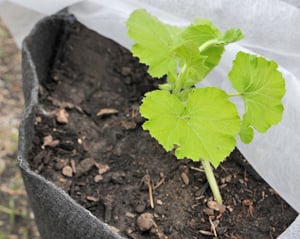
This seedling was started indoors and transplanted outdoors after three weeks. At planting time, it is covered with garden fabric to protect the seedling against cucumber beetles.
How to Germinate Pumpkin Seeds
Pumpkin seeds can be planted outdoors or indoors. Gwenael Engelskirchen, who tests new varieties for High Mowing Seeds, prefers to start them inside — about three weeks before ideal outdoor planting weather arrives. A good way to estimate the indoor planting date: Find out your average last frost date and back up three weeks. "By putting a healthy transplant (instead of a seed) into the ground, you are further along in your growing and have that much more insurance that you'll get a successful crop."
- Pumpkin seeds germinate and grow quickly. Start with a 2" to 3" pot, such as a biodegradable pot, which can be transplanted right into the ground. Plant two seeds per pot and snip one of the seedlings when it's clear which one is thriving most.
- You will also need light. About 12 hours in a south-facing window is ideal. Even better, grow the seedlings under lights or in a greenhouse. The goal is to grow a seedling that's large — but not too large — when it's safe to plant outdoors. A sturdy seedling that's 3 to 3 1/2" tall with two or more sets of "true leaves" is just right. If grown indoors too long — or in too large a pot — the plants will be unwieldy and difficult to transplant.
- Transplant into the garden a week or two after the last spring frost. You can warm the soil by covering it with clear plastic, which works better than the traditional black plastic, as long as you seal the edges with soil to contain the heat.
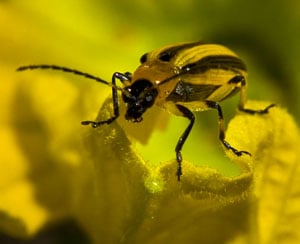
If you grow pumpkins, watch out for this pest, the cucumber beetle (Acalymma vittatum). These quarter-inch bugs have black heads and three black stripes on the back. They are found in the U.S from the east coast to the Rocky Mountains.
Pumpkin Problems: Be Ready for Beetles and Borers
When it comes to pests, cucumber beetles are the most common. Despite the name, cucumber beetles love pumpkin foliage. Small seedlings cannot survive an attack, so it's best to protect them at transplant time. Engelskirchen recalls a set of pumpkin seedlings that was planted one day and defoliated the next morning. To prevent problems, she covers the plants with garden fabric at planting time and leaves it in place until the plants start to flower — about three to four weeks. At that point, the fabric should be removed for the season, so pollinators have access to the blossoms.
Squash-vine borers can also be a problem. Learn to watch for the telltale "frass" that indicates the presence of a borer. If borers attack, you can use a box cutter to extract them.
Powdery mildew is a disease that sometimes affects pumpkins, especially in areas that are wet and humid. To avoid problems, "Be strategic," Engelskirchen says. "Choose varieties that are resistant to mildew and plant outdoors as early as you can, depending on weather."
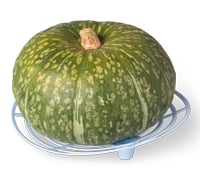
The Squash Cradle supports ripening fruit in style and promotes even coloring.
As fruit forms along the vine, you can use supports — such as the Squash Cradle — to keep fruit off the ground and promote even coloring.
More information on pumpkin pests and diseases: Cornell Vegetable Resource Website.
How to Harvest Pumpkins
In most cases, it takes 90 to 120 days from planting seeds until pumpkins are ripe. Cold-climate gardeners may want to get an early start by planting seeds indoors about three weeks before the last spring frost. Harvest your pumpkins and winter squash in the fall, before they can be damaged by frost. Before being stored away, they should be cured in a warm, dry place for several weeks to allow their skin to toughen. Most squash and pumpkins taste better after they've been cured and then stored for a couple weeks, than they do straight from the garden.
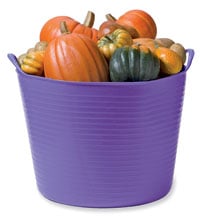
Store pumpkins and winter squash in a cool, dry indoor room. A temperature of about 60 degrees F. is ideal so some people store them under the bed in an unused bedroom. Winter squash will rot quickly in the cool and humid conditions of a cellar or garage.
Last updated: 10/02/2023
Print this Article:
Related items
Related Articles
Get the Dirt
Stay up to date on new articles and advice. Please fill out the information below.


